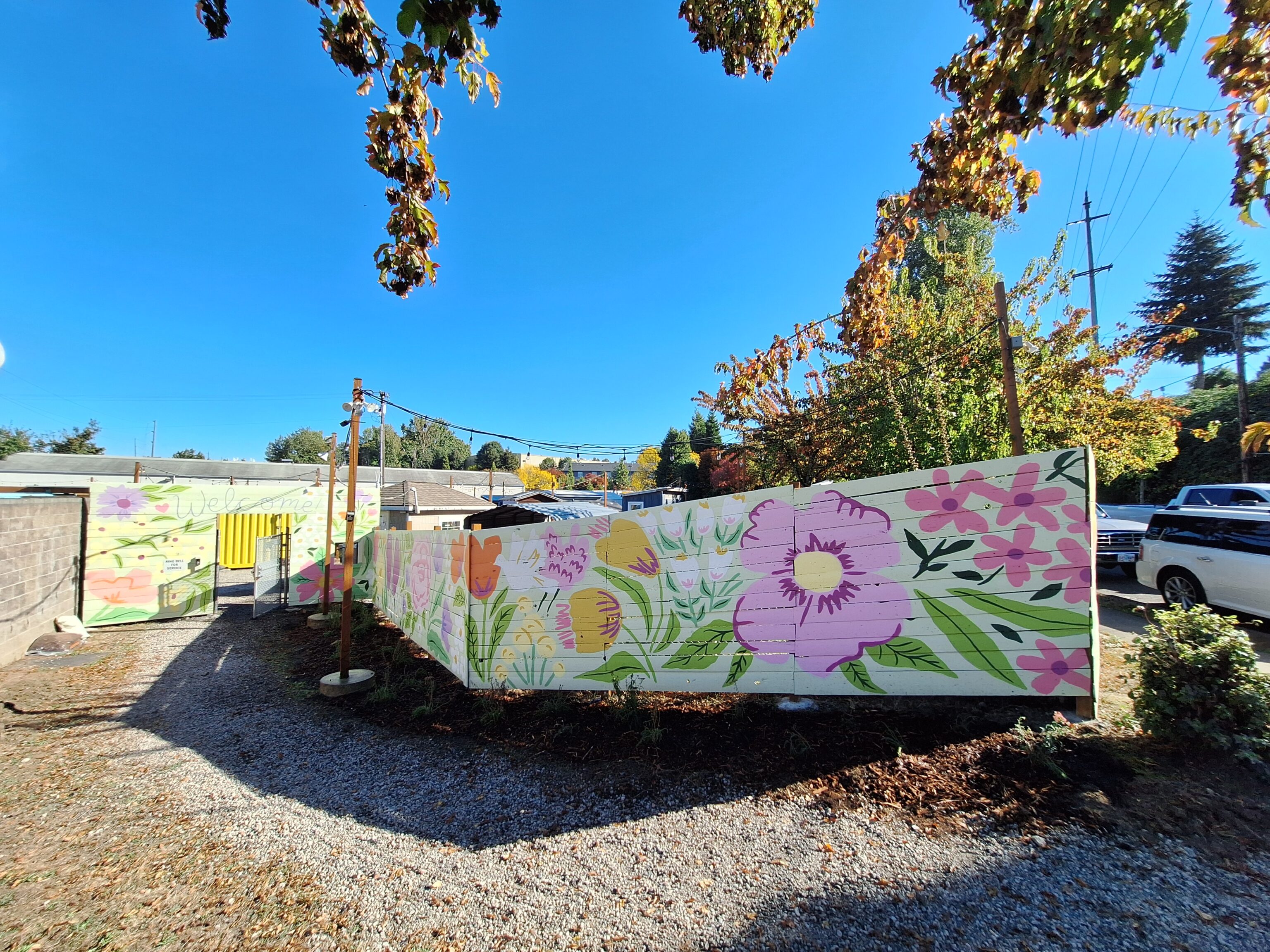New flora-themed mural at tiny home village explores life, growth
SEE VIDEO AT BOTTOM
Even when Portland’s pewter winter skies hang low and wet, residents of Kenton Women’s Village will walk past an exuberant garden each time they come and go.
Artist Alicia Schultz and a group of volunteers completed a mural this summer to add beauty and meaning to a new fence at the village, a community of women in 20 tiny homes.
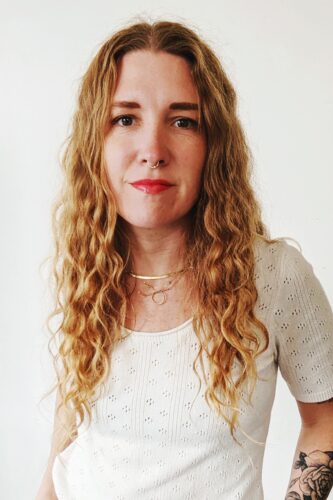
“This space is a place for healing and it’s a space where people can come and find peace and joy and to rebuild their lives,” said Victoria Waldrep, Director of Homeless and Transitional Services for Catholic Charities of Oregon.
For security and privacy at the village, a team of volunteers from Tivnu, a Jewish gap year group, constructed a 10-foot-tall wooden wall at the village entrance. The planks were 120-square feet just calling to be made into art.
Schultz answered the call and volunteered to lead the work. A Portland muralist and illustrator, she founded Vine & Thistle, a company that creates lettering, botanical art and illustrations for stationery, surface designs, murals and other surfaces.
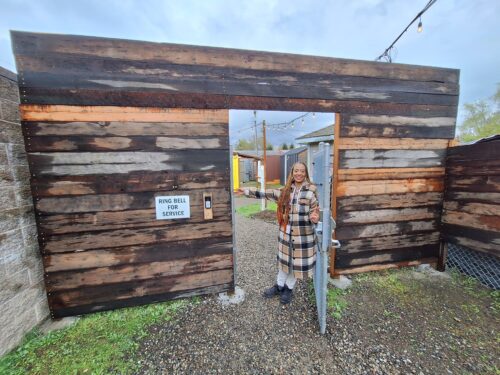
Schultz created the Kenton mural design after meeting with residents and asking them about their favorite flowers. She thinks plants have deep allegorical meaning when it comes to people who are trying to move forward in life.
“I’m super inspired by nature,” said Schultz. “Especially with flowers, they have a season in which they bloom. Then there’s all this other time that they’re doing all this work to get to that. Or even after the blooms are gone, they’re still doing work.”
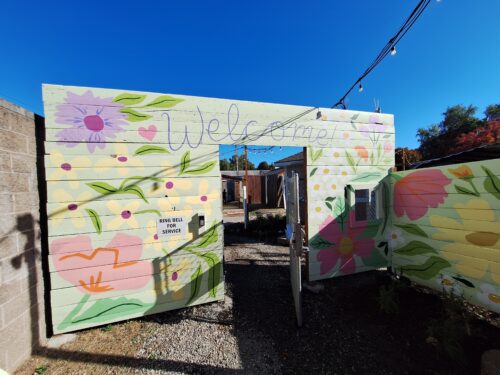
Schultz said it’s also helpful to realize that plants are never perfect, but have holes, droopy leaves and asymmetry. But they are still beautiful.
“When I’m installing a mural on a busy street, people will come walking by and wow it just will completely change the way they’re kind of flowing through their day,” said Schultz. “There’s so much science around colors and how it changes the way you feel. So I’m hopeful that these bright colors will be uplifting.”
“It’s about connection,” she explained. “Mural work provides an opportunity to connect with the community.”
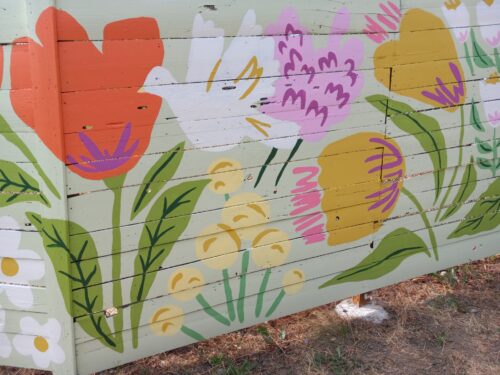
Schultz created a digital design using the wall shape and then drew the outlines freehand with chalk and color-coded the sections. Then the volunteers started filling in, with her guiding the way.
“I always love adding color anywhere,” said Julz Clementine, an artist who volunteered to help. “I think it brings joy. In the Pacific Northwest we have so many months of gray that just having something to look at that is beautiful and colorful and brings hope.”
